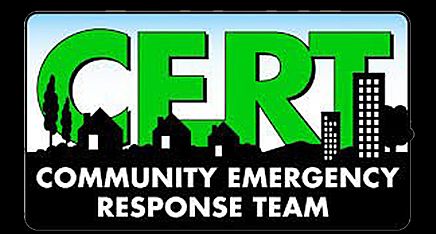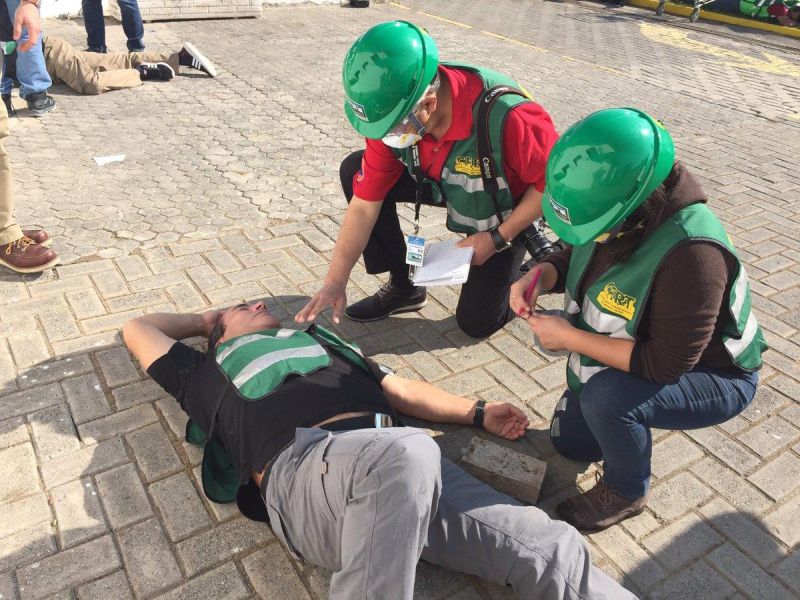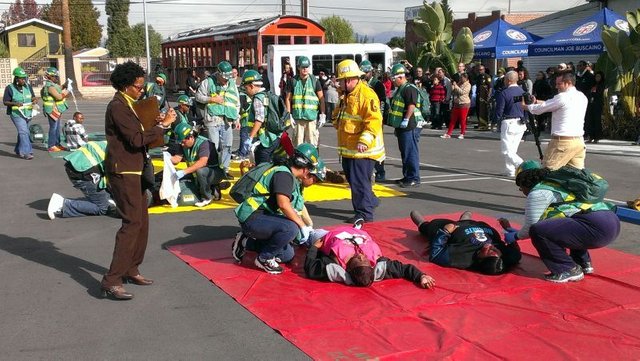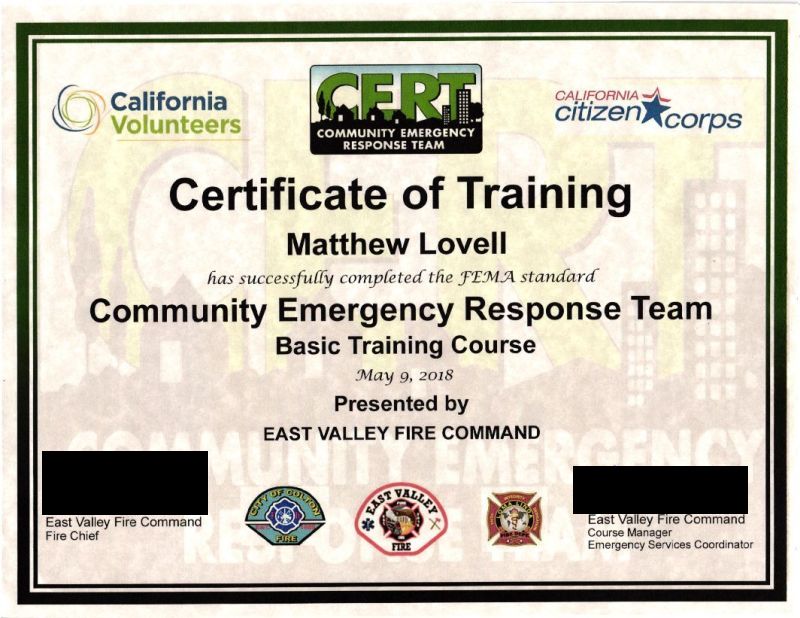Community Emergency Response Team training

Southern California has seen its share of disasters over the years. Major earthquakes in 1906 and 1989 in San Francisco, 1992 (2 major earthquakes with significant aftershocks), and the 1994 Northridge Earthquake; as well as large fire-
storms in recent years. 2017 was one of the worst wildfire seasons in history. The Atlas and Tubbs fires in Napa/Sonoma counties resulted in 28 deaths and nearly 6500 structures lost, and only 2 months later, the Thomas Fire raced across
Ventura county scorching nearly 300,000 acres and burning its way through the city of Ventura as it made its way to the ocean, destroying over 100 structures and taking several lives as it went.
For years I have thought to myself, and shared with a few people: "There should be a way for everyday 'civilians' to assist the professional emergency responders". This really hit home with the Thomas fire in Ventura. News footage showed homes burning, and fire-fighters no where around... It wasn't that the fire-fighters where not doing everything they could, there where just nowhere near enough of them for a fire of this magnitude. Even with neighboring communities, cities, counties and even states sending what help they could; emergency personnel where completely overwhelmed. Along with the news coverage, I saw first hand posts from my friends who live in the affected areas posting stories about being prepared to evacuate, but deciding to stay as long as they could to protect their neighborhoods. The fire Department wasn't going to be there, it was up to them. They Stayed up all night with buckets and hoses, putting out spot fires that, if not extinguished quickly, would have meant the total loss of the neighborhood. The fire burned right up to backyards, but they kept any of the structures from burning. They saved their neighborhood. A couple of blocks over, a few families where not as lucky.
Now, I would not recommend doing what my friends did. It was very dangerous, and could have turned out a much different story. But, they where ready to flee, they had positions their cars at the edge of the neighborhood, and made sure they maintained multiple escape routes- but they where also lucky...
I don't bring up this story to demonstrate how heroic my friends where, I bring it up because it was the moment I saw first hand how quickly the Professional emergency services can, and will, be overwhelmed in the event of a large disaster, and this was 'just' a fire. Imagine when the 'big one' hits and a large section of Southern California is affected, with massive road closures and damaged infrastructure. Governmental response will be even slower. you are going to be on your own for a while. Officials say be prepared for 3 days, but it is likely to be much longer than that, and the initial help will be minimal. So, did something; Instead of just thinking 'there oughta be', or wondering if a program existed... I sought out how to be prepared, and help in case of an emergency.
What I found was the Community Emergency Response Team (CERT) program. CERT started in Los Angeles. In 1985 a group of Los Angeles city officials went to Japan to study its earthquake preparedness plans. What they discovered was that teams in neighborhoods had been trained in various emergency response tasks. They has dedicated teams for fire suppression, light Search and Rescue, and first aid in each neighborhood. Later that year, a team from Los Angeles was sent to Mexico to investigate after an 8.1 quake hit. More than 10,000 people where killed. In the aftermath large groups of people organized themselves and performed search and rescue operations and where credited with over 800 rescues. Unfortunately these untrained rescuers suffered more than 100 casualties themselves in the process.
From these experiences, it became clear that a plan to train volunteers to help themselves and their community, and act as a backup to government response in a major disaster was necessary. In 1986 a pilot program was developed and the
first team of 30 people where trained in basic fire suppression, light search and rescue, and first aid and demonstrated that the program was viable. Unfortunately, limited city resources stalled the expansion of the program. The Whittier Narrows earthquake in 1997 quickly brought the cities attention back to the program and the Disaster Preparedness Division was created within the Los Angeles Fire Department. One of their primary tasks was to "Develop, train, and maintain a network of Community Emergency Response Teams (CERTs)." LA CERT website
In 1993 the Federal Emergency Management Agency (FEMA) decided to take the concept nationwide, and worked with LAFD to expand the CERT training to cover all hazards. By 2011, all 50 states, three territories, and 6 foreign countries are using CERT training.
Last night I completed my basic CERT training. This training was 20 hours, and included 9 sections;
Disaster Preparedness
This unit covers basic disaster preparedness; including the responsibility of government, community leaders, and individuals/families.
Fire Safety and Utility controls
This unit covers basic fire suppression, and how to turn off utilities following a disaster.
CERT members practice Fire Suppression
Image by Me
Disaster Medical operations I
This unit covers identification of life threatening conditions, and basic triage.

CERT members practice triage
Photo by Daniel Llargues - Apr 25, 2017 from FEMA media library
Disaster Medical Operations II
This unit covers how to establish disaster medical treatment areas, Patient Evaluation, and Basic Treatment.

CERT members practice First Aid in the Medical Treatment Area
Photo by Jannah Scott - Nov 22, 2013 from FEMA media library
Light Search and Rescue
This unit covers sizing up the situation, conducting interior and exterior searches, and rescue operations.
CERT organization
This unit covers how CERT is organized, the Incident Command System, Rescuer Safety (always use the buddy system), documentation and Team organization.
Disaster Psychology
This unit covers The psychological impact of a disaster on rescuers and survivors and basic “psychological first aid.” It also covers how to take care of yourself and your team before, during and after a disaster.
Terrorism and CERT
This unit covers many aspects of terrorist attacks, including signs leading up to a terrorist attack, types of terrorist attacks, basic decontamination, and how CERT responds (spoiler, CERT does not respond directly to terrorist attacks, but may be called to provide supporting actions outside the affected area).
Course Review, Final Exam, and Disaster simulation
As the title suggests, this unit is a basic review, a 45 question final exam, and a disaster simulation where you demonstrate what you have learned during the course.
I won't get into the training in detail in this post, but you can find the training materials on the FEMA website or google "FEMA CERT basic training" and I will be happy to answer any questions in the comments below, or in a follow up post if there is enough interest.
The "Disaster Simulation" portion of the training consisted of our team being assigned to search a building after a major earthquake. It included assigning an Incident Commander, setting up an incident command post, a medical treatment area, and having CERT members assigned to the areas of FIre suppression, Search and Rescue, and Medical treatment teams, as well as a couple of people assigned to help the Incident Commander (typically a scribe to document our actions, and a communications/operation officer to handle radio communications at the Incident Command Post).
During the exercise, the building was assessed for safety, small (simulated) fires where extinguished, and survivors where discovered, triaged,
and eventually rescued and moved the the medical treatment area. We ran the exercise twice, changing roles and slightly altering the scenario each time. For the first round I volunteered as communications/operations officer and worked with the Incident commander. For the second round I was assigned to be the Fire Suppression team lead. Being new to this, our team struggled a bit- but we got the job done. The second round went much better, the team worked well together and was much more efficient. It is obvious that practice is necessary to build and maintain these skills.
Luckily, there are plenty of opportunities locally. CERT team members are offered training opportunities often; The county performs an 'area wide' drill once a year (they are looking to make it twice a year), and various cities perform their own training and drills which are usually open to anyone who wishes to participate.
Even if you don't plan on participating at the "Team" level in your city or county, I highly recommend this training to everyone. The information in this training is valuable in preparing yourself and your family for disaster. Remember, "You are the help until help arrives". Your family, neighbors, and community are who will get you through a disaster.



I am so proud of you for stepping up and putting in the effort. You always inspire me!
Excellent research, too. Very informative info and empowering as well!!!
Highly rEsteemed!
It's about time, and welcome. I have been a CERT team member at UCSD since 2007, when it was first formed after a devastating fire. I have continued training, with the last one being a medical triage exercise.
Well, you work for the Govmt... and your team is work sponsored :)~ It took me almost 3 months to even make contact with the San Bernardino City CERT program, and I'm fairly resourceful. One couple in my class has been trying to connect with the city CERT program for over 6 months, and finally gave up and contacted the county... San Bernardino City is still trying to hire a new Emergency Manager, so hopefully the program will get active again. I guess it was fairly active before the bankruptcy, but it was run under the Fire Department, which was dissolved (we now fall under county fire). The Police Department has picked up the CERT program, but the transition has been rough.
Too bad they didn't disband the San Burnaghetto PD instead of the fire dept...
I have no complaints about the PD...
Oh, maybe its the SBDO sheriff that has such a terrible reputation...
IDK, but Riverside, for sure...
My beloved, the crisis actor lol!
This post was chosen to be featured in this weeks SoCal Spotlight!! Thank you so much for being part of the #socalsteemit community.
Congrats dude! This sounds very useful and I am going to look into it too. Since I live bi-costal in two earthquake prone countries even basic info like this can make a huge difference.